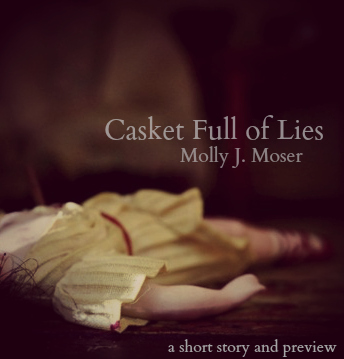
My data and narrative journalism professor, Alan Deutschman, introduces some really amazing and inspiring journalists to the university. I mean, these people work for big time papers and magazines.
The guest he brought to us this week grabbed my full attention and is probably my favorite guest he’s brought so far. It was Suzanna Andrews, a contributing editor to Vanity Fair, who writes features and investigative articles on business, politics, culture and crime — in her definition, her theme of writing is “abuse of power”.
She’s also written for other numerous publications such as The New York Times, GQ, Rolling Stone, and Reader’s Digest. She was also a story consultant to ABC’s “20/20”. She’s won a couple of Front Page awards for her features on Vanity Fair.
As a class assignment and in order to prepare to ask her questions, we were required to read two of her most impacting articles, Murder Most Yale and Arthur Miller’s Missing Act (I suggest you read both of them — they’re really good).
Both feature stories required so much investigation, stalking, credible information, and main sources. How did she do it all? Andrews shares her helpful investigative tips to the class and especially her experiences while writing these stories.
Murder Most Yale is a feature investigative article by Andrews based on the murder of Yale student, Suzanne Jovin, in 1998. It’s a case that is still under investigation today; they say it’s the “college version” of the Jon Benet Ramsey case. Andrews focuses the timeline of the night of the murder in her story, but mainly focuses on the people that surrounded Jovin’s life to find more information on the case.
Jovin’s story was first published in the New York Times — and Andrews said that this story “needed a lot of play”
Finding Personal Recommendations
As you may have noticed in the article, the police weren’t as involved. Andrews said with most crime stories, there will be slim chances that a reporter will get information from the police. Instead of constant calls and emails to set up interviews, Andrews recommends following them instead.
As a semi-experienced reporter, I find it difficult how to contact the main sources I need to talk to for my stories. Some connections may not always lead you to that significant source, but apparently the ones you’d never think who would have any contact with them might actually do! Andrews said during her investigation to find Jovin’s closest friends to interview them, she gotten from a word-of-mouth that a restaurant owner nearby Yale was pretty popular among the students — they loved him. When Andrews approached him, he was able to connect her with Jovin’s friends.
Andrews said each story has source circles; you have to work your way into the hub. You start interviewing those on the outside of the circle: Aquaintinces –> Close friends –> Parents –> Suzanne.
“It gives me time to think about the story and what to collect,” Andrews said. “When I get to the center of the story, I feel like I know the story as much as they do, or better.”
If you get enough attention, your sources might come to you
Andrews said she had a difficult time getting a hold of Jovin’s parents for an interview. After attempts with a few phone calls with them, she had to end up emailing them the interview instead. During the phone calls, the mother could not stop sobbing and the father refused to talk.
“I was horrified calling the parents,” Andrews said. “It was clear to me that they were grief stricken and angry.”
Andrews said you can’t always fire questions; sometimes its best to play it off as a conversation.
“There’s that element of authenticity, too,” Andrews said. “You want to get people to talk.”
However, Jovin’s younger sister approached Andrews with a phone called and accepted an interview. Somehow, she found Andrews.
Andrews said getting in contact with James Van de Velde was one of the most difficult parts writing the story. Van de Velde was Jovin’s professor and thesis adviser, and is a suspect of her murder. Andrews said she could only get a hold of Van de Velde’s emissaries or friends. One emissary of Van de Velde’s that Andrews got to interview was a woman. Like the rest of Van de Velde’s friends, it was expected that this woman would say nothing but good words about the professor. However, Andrews said the woman had different thoughts about Van de Velde and saw him the night of the killing.
“(The story) consumed my life,” Andrews said. “It’s a psychological rage.”
Andrews said during the time of writing this feature, she played out possible scenarios in her head and timed the driving and distances within the area of where Jovin’s body was found.
Does Andrews think Van de Velde killed Jovin? She said yes, but she doesn’t have an exact reason why she was so drawn to write this story.
“I kind of wondered that myself,” Andrews said. “I felt like I was lead to it. I didn’t feel like I was going to nail the professor, but the story latches on to you.”
Andrews’ Arthur Miller’s Missing Act is based on playwright, Arthur Miller (Death Of A Salesman, The Crucible, A View From the Bridge and ex-husband of Marilyn Monroe) and the abandonment of his son, Daniel Miller, who was diagnosed with down-syndrome as an infant. Miller cut Daniel out of his life immediately and never mentioned him when he brought up his children in books, interviews and even at his wife’s funeral. For 40 years, Daniel was kept as a secret. When Miller died in 2005, it was known to the public that he did not leave a will, but he actually did, and left Daniel a good portion of his money to last him for the rest of his lifetime.
Andrews said it was almost a possibility that Vanity Fair didn’t run article due to the intense emotion of the story and that it could offend those who have a child of down-syndrome of their own. But everyone knew it was a story that deserved attention.
Rebecca Miller, Daniel’s sister and a daughter of Miller’s, is now a close member of her family. Rebecca didn’t allow Andrews to speak to Daniel. In fact, Rebecca and her husband, Daniel Day-Lewis, were disgusted by Andrews’ story. Andrews said she thinks Rebecca was afraid for the safety of her brother.
“This story was fought very hard by Arthur Miller’s family,” Andrews said.
Andrews had the chance to speak to one of Daniel’s caregivers, however. Andrews said she was on the web for days just to find connections between Miller and Daniel. She ended up on a Vietnam Veteran chatroom and spoke to a member who saw Daniel at a party. The member she spoke to in the chat room ended up being the husband of Daniel’s caregiver.
Andrews said when she called up the caregiver for an interview, the caregiver said, “It’s about time.”
After Andrews’ lecture, I feel that I can be more confident in expanding my choices when writing a hard or feature story. So I think I have until tomorrow to meet one-on-one with Andrews in Professor Deutschman’s office until she has to go back to her home in New York City. I would love to see if I have time to have coffee with her for a more personal talk, but even just a handshake and a short conversation might do well — whatever the outcome is, it’s worth it, right?
Follow Suzanna Andrews on Twitter!: https://twitter.com/AndrewsSuzanna

